A thick scar runs along Shohei Ohtani’s right arm. Further evidence also lingers under the skin.
“I hope you would say, ‘This looks like a normal ligament…’” says Dr. Neal ElAttrache, the surgeon who put Ohtani and many of sports’ biggest stars back together. ‘Just a little fatter.’
That’s the legacy of two surgeries over five years aimed at rebuilding the elbow of baseball’s most prized asset. The hope for both doctor and patient? That scar will fade and eventually the only giveaway will only be visible via MRI.
In December, a few months after that second round of surgery, the Los Angeles Dodgers handed Ohtani a $700 million contract – the richest contract in sports history. It was a vote of confidence in nine-figure ElAttrache and a procedure that has saved billions of dollars and thousands of careers over the past fifty years.
Ohtani is not scheduled to pitch in a game again until 2025 after tearing his ulnar collateral ligament for the second time. The Dodgers are betting on the two-time star to rediscover the level that made him a two-time MVP. A risky bet? Ohtani has already done it once. And that goes for plenty of others too.
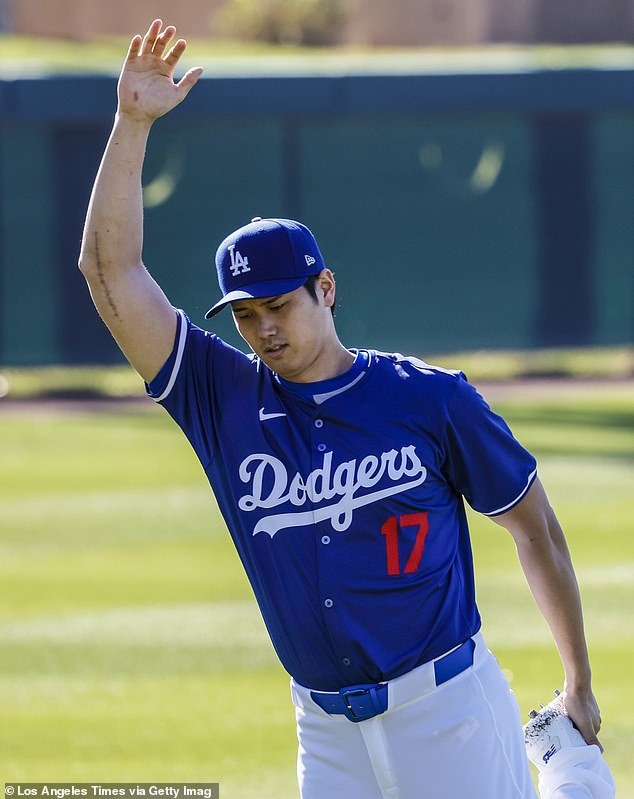
Shohei Ohtani’s right arm bears a scar after his second Tommy John surgery
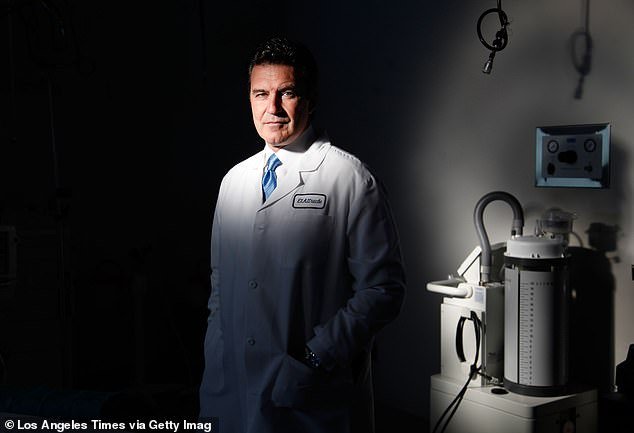

Dr. Neal ElAttrache, the sport’s most famous surgeon, operated on the $700 million star twice
According to the Kerlan-Jobe Institutemore than 90 percent of pitchers return to their best levels after undergoing Tommy John surgery, the groundbreaking procedure first developed by Frank Jobe 50 years ago. In simple terms, surgeons reconstruct the UCL by transplanting a replacement tendon, usually from the forearm or the hamstring. And according to ElAttrache, it is “the most impactful, most important and most successful reconstructive procedure in sports.”
In fact, the surgery has developed such a mythology that many coaches and parents have considered putting players under the knife – even before their elbow is injured.
“The Tommy John is the king. I don’t think there is a procedure we perform that is as important in sports as this,” ElAttrache said. And yet, disaster looms as baseball faces a crisis on the mound.
“The numbers are pretty staggering,” said ElAttrache, the Dodgers’ chief team physician. More than 30 percent of MLB pitchers have undergone Tommy John surgery at some point in their careers, including 38 in the past 13 months. The Guardians’ Shane Bieber and Atlanta’s Spencer Strider are among the latest — it’s been a brutal start to the 2024 season. About 80 pitchers are currently dealing with elbow issues, according to ESPN’s MLB Injury Status.
The Astros’ Justin Verlander labeled the current wave of injuries a “pandemic.” ElAttrache calls it an ‘explosion’. And the number of players who, like Ohtani, re-tear the ligaments and require a second surgery is also growing.
“Their effort and performance are greater than before,” says the surgeon. “So if you can tear the ligament that God placed in your elbow. You can tear up the copy I’m reconstructing.’
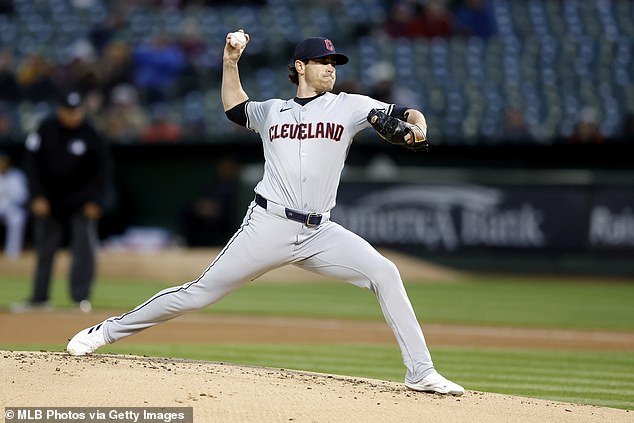

Cleveland Guardians pitcher Shane Bieber is one of the latest pitchers to go under the knife
MLB is embroiled in a public feud with the players’ association after shortening the time between pitches. Experts like ElAttrache cannot provide a simple solution. Just a warning.
“There is no doubt that we are exceeding the maximum capacity of this ligament – at an ever-increasing rate,” says ElAttrache.
Surgeons have already had to modify the Tommy John to help pitchers meet today’s demands. And ElAttrache fears there will come a day when existing medical procedures “simply can’t keep up.”
‘I never underestimate the demands of the human body. And I try not to overestimate what I can do as a human being to solve the problem,” he says. “What may happen, unfortunately, is that this will continue… until enough of them rupture that we can no longer perform a good enough operation to get them back.”
ElAttrache refined his craft under Jobe, the man who changed sports medicine in September 1974.
“One of the most talented and beautiful surgeons I have ever seen in my life,” he says. However, what made Jobe ‘head and shoulders above his peers’ was his ‘eternal quest for learning, research and experimentation’.
That drive for innovation led him to a groundbreaking procedure. A torn UCL would end a pitcher’s career for so long; Jobe thought his surgery had a 1 percent chance of success. But former Dodgers pitcher Tommy John returned to the mound for another 14 years.
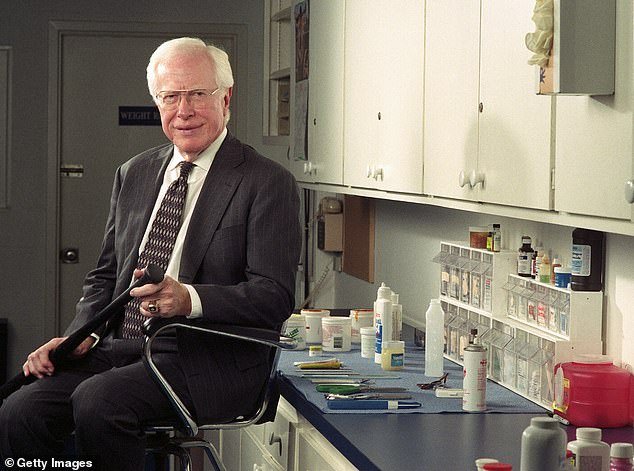

Dr. Frank Jobe first performed the groundbreaking procedure on ex-Dodgers star Tommy John
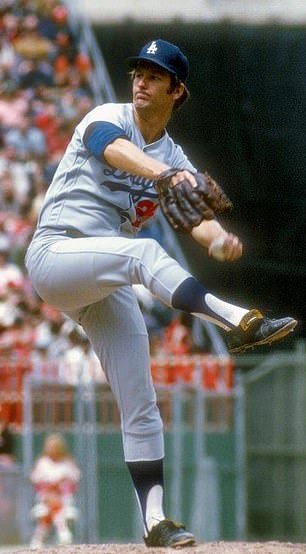

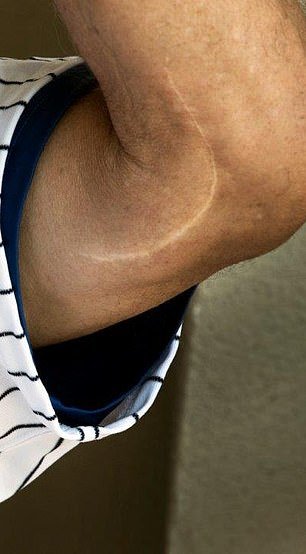

The pitcher returned to the mound for another 14 years after the surgery
“One of the reasons why this came about is the rise of multi-year contracts with big money,” ElAttrache explains. ‘Teams invested more in their players.’ And in baseball, many of those dollars were guaranteed.
“So if you got hurt in the first year of your contract and the team had already invested in you, they were more willing to do whatever it took to fix you.” Before then, teams simply moved on to someone else.
“Remarkably, the concept of the operation has not changed much at all in fifty years,” says ElAttrache. But the number of patients has skyrocketed: In the early 1990s, fewer than 10 MLB pitchers required Tommy John surgery each year. According to the Kerlan-Jobe Institute, in 2012 a record of 69 went under the knife.
“The biggest thing is that the style of pitching has changed so much, everyone is throwing the ball as hard as they can and running the ball as hard as they can,” Verlander said recently.
In 1974, ElAttrache explains, the average MLB pitcher clocked about 90 miles per hour. Now it’s about 94; now every team has a guy who can reach 100 mph. And even small changes in speed require a ‘huge’, ‘exponentially larger’ voltage.
“So we had to think of ways to improve the procedure,” says ElAttrache. Now, in addition to transplanting a new tendon, some surgeons add an ‘internal brace’ for extra support.
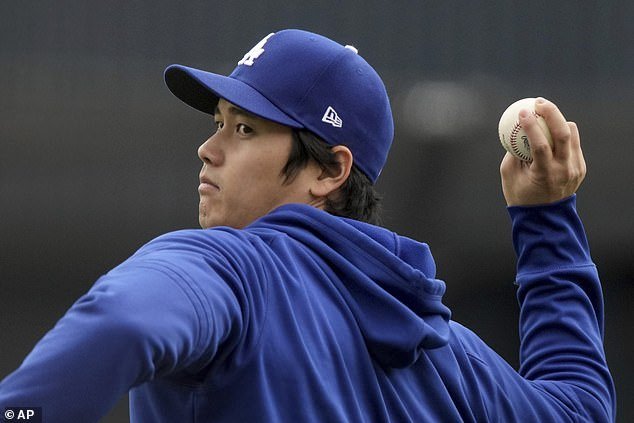

Time will tell if Ohtani’s ‘enhanced rebuild’ will be as successful as his first in 2018
Time will tell if Ohtani’s ‘enhanced rebuild’ will be as successful as his first in 2018. ‘Prior to his Tommy John surgery, he was driving at 100 mph. In March 2023, it was clocked at 165.5 km/h,” ElAttrache said.
“Everyone was ecstatic.” It spoke of the success of his work. And yet? “I may have been the only person on earth who was a little concerned.” The doctor felt that the increased speed was a ‘harbinger’ of pain – and he was right. ElAttrache also knows that improvements after surgery can present another problem. For a while, surgeons had to battle coaches and parents who wondered: Why wait until a pitcher is injured before getting a Tommy John?
“They saw that so-and-so famous pitcher hurt himself, had the surgery, and was able to throw just as well or better after the surgery,” he explains. “It’s still a common thought… if you have Tommy John surgery, you’re better than God made you.”
The reality? “That’s just not the case,” says ElAttrache. Because in the seasons leading up to a UCL tear, pitchers’ stats often start to decline. “So they’re back where they were before they started their demise.”
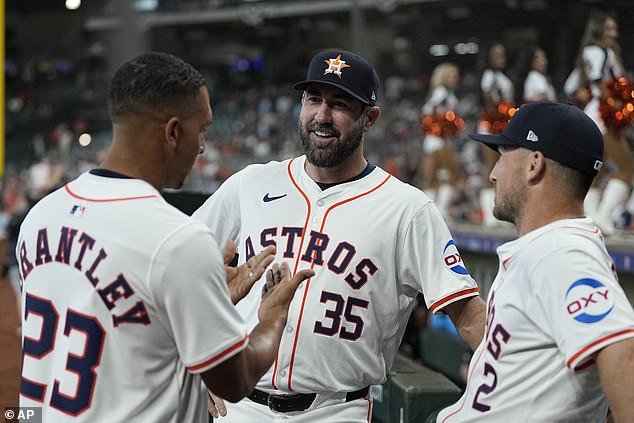

‘I don’t know how you turn back the clock,’ Justin Verlander (c) said of the injury ‘pandemic’
Surgeons are busy enough right now without having to debunk myths or offer simple solutions.
“This explosion of injuries is not just because of one thing,” ElAttrache said. ‘It’s not just the time between pitches. That’s not just because they can no longer stick sticky stuff on their fingers.’
This is not just because pitchers are now trained from an early age to throw as fast – or with as much spin – as possible. “It’s hard to prove that one of these things is the culprit because it’s not, it’s the combination.”
Verlander agrees. “When you put it all together, everything has some influence,” he said. “I don’t know how you turn back the clock.”
If all goes well, Ohtani will throw his first simulated game in late September – almost 50 years after the very first Tommy John surgery.
